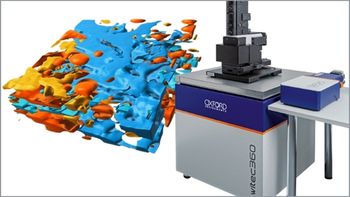
Micro-Raman Spectroscopy to Analyze Layered Manganese Oxide Structures
In a recent study from Ghent University and Charles University, scientists analyzed layered manganese oxide structures using different Raman spectroscopy techniques.
Scientists from Ghent University in Ghent, Belgium and Charles University in Prague, Czech Republic published a study in late 2023 on the characterization of different layered manganese oxide structures, using various types of Raman spectroscopy. Their findings were published in the Journal of Raman Spectroscopy (1).
The scientists used Raman to analyze five mineral samples of layered manganese oxides using different Raman instrumentations. Techniques used in the study include mobile Raman systems and a benchtop micro-Raman setup. A micro-Raman setup is when a Raman microspectrometer, which consists of a specially designed Raman spectrometer integrated with an optical microscope, is used instead of a standard Raman spectrometer (2). This process allows for Raman spectra to be acquired from microscopic samples or microscopic areas of larger samples, all while requiring much less samples and enabling certain effects to be enhanced over localized regions. Portable Raman spectrometers have also been growing in popularity within the past few years, partly due to how they combine Raman spectroscopy with miniaturized components, enabling users to take the devices anywhere (3).
Read More:
Manganese oxide minerals have been used for thousands of years. These minerals were initially used for pigment creation, and today are used for making catalysts and battery materials (4). The main structural building blocks that form manganese oxides are MnO6 octahedra, which share corners and edges to form specific structures and can be either tunneled or layered together. These layered structures, or phyllomanganates, have the MnO6 octahedra form sheets that can alternate between sheets of metal oxides and H2O. The metal ions that are involved can vary, with examples including zinc (Zn), cobalt (Co), nickel (Ni), aluminum (Al), and lithium (Li). Furthermore, these ions can lead to the creation of various metal oxides.
Read More:
These layered materials have a variety of economic and industrial applications. For example, Birnessite-type materials are a type of layered manganese oxide that is typically used as cathode materials in alkali-ion batteries. Phyllomanganates, a different type of manganese oxide, are usually found as constituents in sediments, soils, and coatings on rock surfaces. Due to their natural appearance as black-colored components, phyllomanganates were typically used throughout history as pigments in historical rock art paintings and pottery.
References
(1) Vermeersch, E.; Košek, F.; De Grave, J.; Jehlička, J.; Rousaki, A. Layered Manganese Oxides Structures: Micro-Raman and Selected Mobile Raman Spectroscopic Studies. J. Raman Spectrosc. 2023, 55 (2), 246–262. DOI:
(2) What is Raman Spectroscopy? CRAIC Technologies 2024.
(3) Handheld Raman Spectroscopy. Agilent Technologies 2024.
(4) Post, J. E. Manganese Oxide Minerals: Crystal Structures and Economic and Environmental Significance. Proc. Natl. Acad. Sci. USA 1999, 96 (7), 3447–3454. DOI:
Newsletter
Get essential updates on the latest spectroscopy technologies, regulatory standards, and best practices—subscribe today to Spectroscopy.





